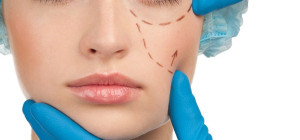 Cosmetic fillers are a popular treatment to help reduce the appearance of wrinkles, fine lines, and creases in the skin. There are many different types of wrinkle fillers available on the market today, each with its own set of benefits and drawbacks. In this article, we’ll take a look at some of the most popular wrinkle fillers and what you should know about each one.
Cosmetic fillers are a popular treatment to help reduce the appearance of wrinkles, fine lines, and creases in the skin. There are many different types of wrinkle fillers available on the market today, each with its own set of benefits and drawbacks. In this article, we’ll take a look at some of the most popular wrinkle fillers and what you should know about each one.
What causes wrinkles
Before we get into the different types of wrinkle fillers, let’s first take a look at what causes wrinkles in the first place. Wrinkles are caused by a variety of factors, including:
– sun damage
– smoking
– poor diet
– dehydration
– genetics
As we age, our skin produces less collagen and elastin, two proteins that help keep the skin plump and wrinkle-free. This loss of collagen and elastin leads to fine lines, wrinkles, and sagging skin.
How to choose wrinkle fillers
As there are several ways to treat wrinkles and fine lines, they may take a while to make your skin youthful. Thankfully, dermal fillers are one of the quickest ways to get rid of wrinkles and fine lines on skin. Dermal filler injections can quickly diminish the fine lines and wrinkles on face to bring your youthful skin back and to keep you young for years. Moreover, use of such dermal fillers is completely safe and come with a fewer side effects to help you treat wrinkles accordingly.
As wrinkle fillers are getting more popular, there is an increase in the number of dermal filler products. So, it is becoming hard to decide which wrinkle filler is best for you. However, you can easily choose the wrinkle filler by keeping some points in your mind.
The wrinkle filler should be:
– Approved by FDA
– Comfortable
– Easy to use
– Safe
– Effective
You should also talk to your dermatologist to know more about wrinkle fillers and to choose the best wrinkle filler for you. The best dermal fillers wholesale prices you can find here: Major Medical Solutions
Types of face fillers
Wrinkle fillers:
-Hyaluronic acid fillers: Hyaluronic acid is a substance that occurs naturally in the body and helps to keep the skin hydrated and plump. Fillers made from hyaluronic acid are often used to treat wrinkles around the mouth, eyes, and forehead.
-Collagen fillers: Collagen is a protein that occurs naturally in the body and helps to keep the skin firm and elastic. Collagen fillers are often used to treat wrinkles around the mouth, eyes, and forehead.
-Fat injections: Fat injections involve taking fat from another part of your body and injecting it into the wrinkle. Fat injections are often used to treat wrinkles around the mouth, eyes, and forehead.
-Calcium hydroxylapatite (Radiesse): Calcium hydroxylapatite is a substance that occurs naturally in the body and helps to keep the skin firm and elastic. Radiesse is often used to treat wrinkles around the mouth, eyes, and forehead.
-Poly-L-lactic acid: Poly-L-lactic acid is a synthetic substance that helps to stimulate the production of collagen in the body. Poly-L-lactic acid fillers are often used to treat wrinkles around the mouth, eyes, and forehead.
-Polymethyl methacrylate (PMMA) Fillers: PMMA is a synthetic substance that helps to stimulate the production of collagen in the body. PMMA fillers are often used to treat wrinkles around the mouth, eyes, and forehead.
How do wrinkle fillers work?
Wrinkle fillers work by filling in the wrinkle, thereby making it less visible. There are many different types of wrinkle fillers available, each with its own set of benefits and drawbacks. In this article, we’ll take a look at some of the most popular wrinkle fillers and what you should know about each one.
How long do wrinkle fillers last?
The length of time that wrinkle fillers last depends on the type of wrinkle filler used. Hyaluronic acid wrinkle fillers usually last for 6-12 months, while collagen wrinkle fillers usually last for 3-6 months. Fat injections can last for up to 12 months.
Are wrinkle fillers safe?
Wrinkle fillers are generally safe when used as directed by a qualified dermatologist or plastic surgeon. However, as with any medical procedure, there are risks involved. Be sure to talk to your doctor about the risks and benefits of wrinkle fillers before you decide to have the procedure.
What are the side effects of wrinkle fillers?
The most common side effect of wrinkle fillers is bruising, swelling, and redness around the injection site. These side effects usually resolve within a few days. Other potential side effects include lumps, blotchy skin, and infection. Be sure to talk to your doctor about the potential side effects of wrinkle fillers before you decide to have the procedure.







